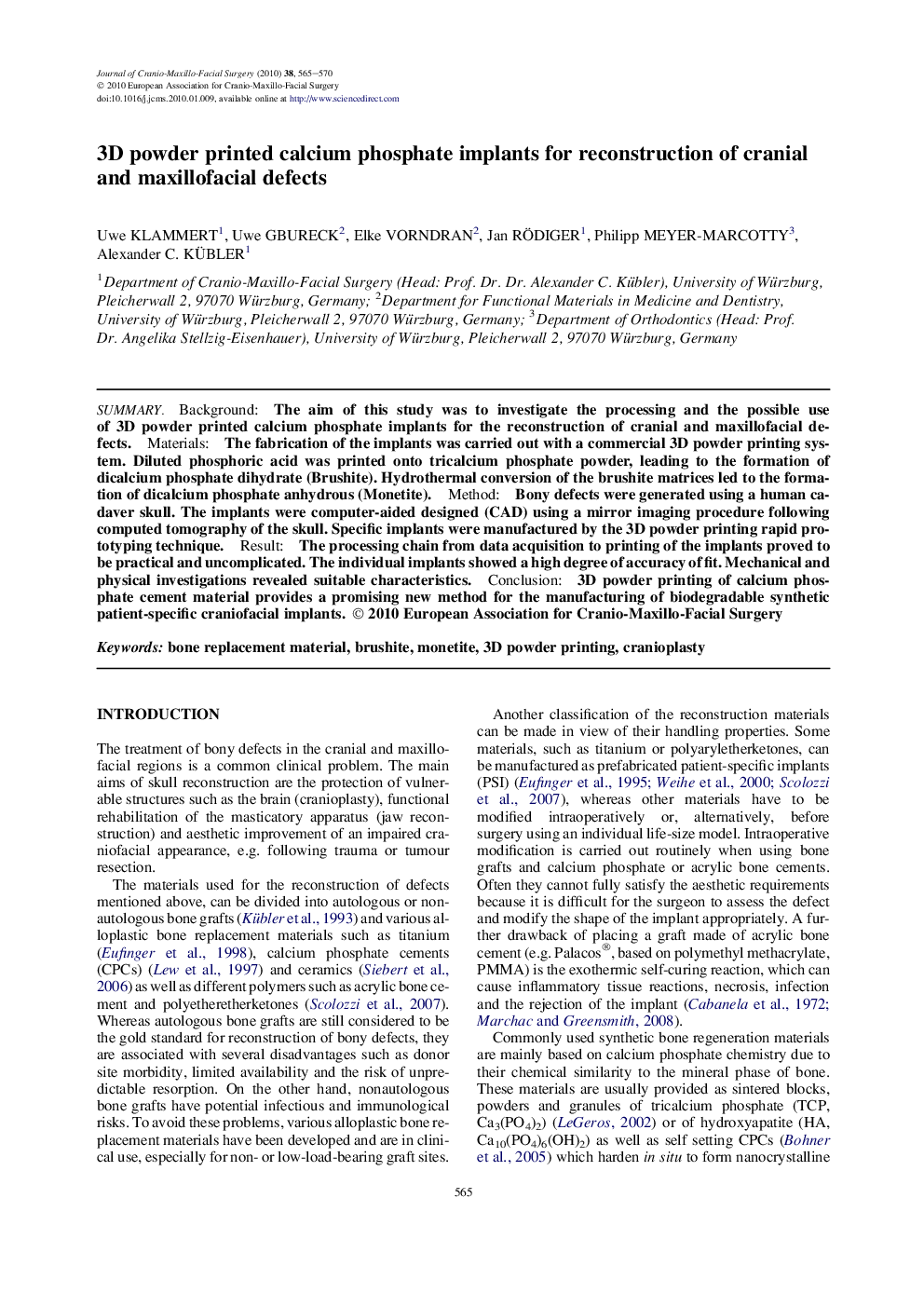| Article ID | Journal | Published Year | Pages | File Type |
|---|---|---|---|---|
| 3143758 | Journal of Cranio-Maxillofacial Surgery | 2010 | 6 Pages |
SummaryBackgroundThe aim of this study was to investigate the processing and the possible use of 3D powder printed calcium phosphate implants for the reconstruction of cranial and maxillofacial defects.MaterialsThe fabrication of the implants was carried out with a commercial 3D powder printing system. Diluted phosphoric acid was printed onto tricalcium phosphate powder, leading to the formation of dicalcium phosphate dihydrate (Brushite). Hydrothermal conversion of the brushite matrices led to the formation of dicalcium phosphate anhydrous (Monetite).MethodBony defects were generated using a human cadaver skull. The implants were computer-aided designed (CAD) using a mirror imaging procedure following computed tomography of the skull. Specific implants were manufactured by the 3D powder printing rapid prototyping technique.ResultThe processing chain from data acquisition to printing of the implants proved to be practical and uncomplicated. The individual implants showed a high degree of accuracy of fit. Mechanical and physical investigations revealed suitable characteristics.Conclusion3D powder printing of calcium phosphate cement material provides a promising new method for the manufacturing of biodegradable synthetic patient-specific craniofacial implants.
